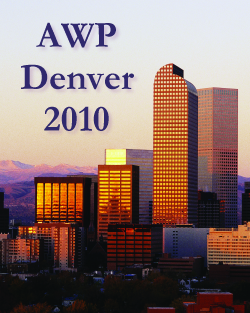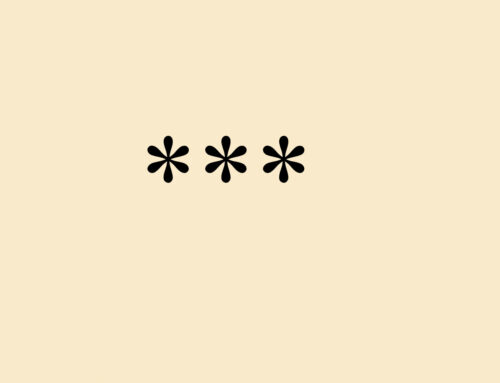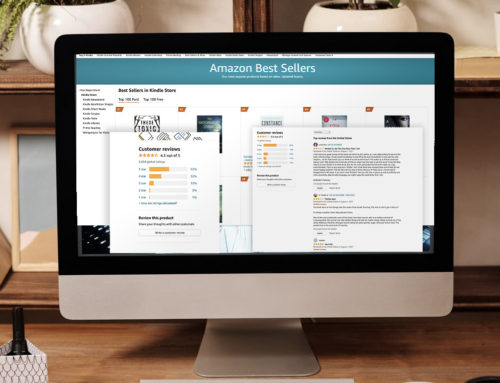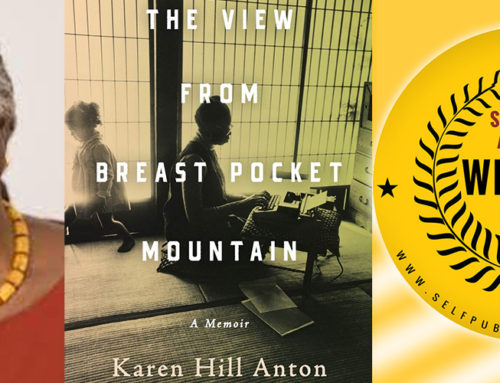 I just got back from the AWP conference – the Association of Writers and Writing Programs – in Denver. 9000 or so publishers and writers. A lot of litmags, university presses, poets, fiction and non-fiction writers, setting up shop. A great experience all around. I’d never actually been to a large-scale conference like this one.
I just got back from the AWP conference – the Association of Writers and Writing Programs – in Denver. 9000 or so publishers and writers. A lot of litmags, university presses, poets, fiction and non-fiction writers, setting up shop. A great experience all around. I’d never actually been to a large-scale conference like this one.
50 or so panels a day. I was on one of them – “To Publish or Self-Publish” – with Ivory Madison, CEO of Red Room, Daniel Will Harris, a book designer, and author Christopher Meeks, who put the panel together. Read his rundown of the conference here.
One of the major takeaways from the conference was this: everyone’s in the same boat. Everyone loves writing and everyone is having trouble marketing. One of the better panels was “The Future of Publishing” with Dennis Loy Johnson of Melville House and an editor from Tin House. Interestingly, both said they consider it a success when they sell 5000 books. I’ve heard elsewhere that McSweeney’s is happy with 3000 books sold.
McSweeney’s. One of the biggest brand names in indie lit – available at Barnes & Noble and elsewhere, reviewed in traditional media. If, as a self-publisher, you’re struggling with selling a book, keep these numbers in mind. It’s hard for everyone. And it calls attention to the fact that when editors/agents say that a self-published book needs to sell 10,000 copies to draw notice, it makes limited sense given that it’s so much harder to unload a self-published book. If someone is selling a Kindle book for a dollar, this is one thing, but if a self-publisher is able to sell 1000 print copies, this is saying a lot.
But that’s an aside, mostly. When you break it down, there is very little difference between self-publishers and the people who run small publishers (though they might not want to admit that). Though among writers there is a pervasive sense that you’re only legit if you’ve been accepted by an editor, editors at small or university presses are facing the same uphill battle as self-publishers: how to find readers, how to find reviews, how to sell books. As many people who work at small publishers are also writers themselves, the difference narrows even further.
That might not seem like an enormous revelation, but some may be insecure about their venture into self-publishing – is it really legit? Should I be patient and submit to publishers? When you see the convention floor full of hundreds upon hundreds of publishers and the sea of books being produced – books that may sell fewer copies than the traditional self-published book – one recognizes that there’s very little difference in the process, so long as you’re putting out a good, carefully-crafted book. Everyone’s got the same struggles and complaints.
Generally, the mood was self-publishing friendly. This was made clearer in a panel on digital publishing, where more than one writer talked about being in a print journal that had a handful of readers, but if a poem/story is online, they’re still getting emails years after the fact. Never going out of print is one of the majorly attractive things about print on demand. People were mostly positive about the e-revolution because it gets people reading, and cynical about giants like Amazon and B&N. Julie Barer, a lit agent, made the good point: if you want to support publishing, buy some new hardcover books. The same thing could be said about self-publishing. People lament how few self-published books sell, but how many self-published books are you buying yourself? Pay it forward.
All in all, a pretty inspiring experience. In the run up to going to Denver, I was getting pretty exhausted running this site. Thinking about percentage royalties at Amazon and other business-centered news isn’t really my natural state of being. I like reading, I like writing, I like books. At AWP, I found thousands of other people who think the same and realized (again) that self-publishing is about a love for books, not about any kind of “failure” with releasing it another way.
P.S. The site’s had a minor update, upgrading to new software. Go to “Activity” under “Community” in the header navigation to see all the site’s activity. Other new networking features as well – such as if you write @henry-baum (or someone else’s ID) in a comment, the person will be sent an alert.
Get an Editorial Review | Get Amazon Sales & Reviews | Get Edited | Publish Your Book | Enter the SPR Book Awards | Other Marketing Services






















Hi Henry — Delighted to hear you liked the “future of publishing” panel. Only one thing: I never said I “consider it a success when they sell 5000 books.” I would never make such a generalization about sales goals, and you’ll recall that when a questioner from the audience asked me to do so I bluntly refused. It’s important that people remember all books are not alike, and such generalizations — as with, in addition, bestseller lists, say, or Amazon declaring all books should be valued at $9.99 — are gross misunderstandings of what books are all about. Thanks for letting me clarify. Best, Dennis Johnson
Thanks for visiting. The general vibe I got was small publishers are not unloading huge numbers of titles. As you mentioned about the (shall remain nameless) writer with innovative marketing ideas, he still doesn’t sell tens of thousands of books. I’m sure he sells better than most self-publishers’ dreams, but the gist was that it’s hard to market and reach an audience at every level.
Someone’s doing it though and this list is mind-numbing:
http://www.publishersweekly.com/article/455278-Facts_Figures_2009_Revised.php